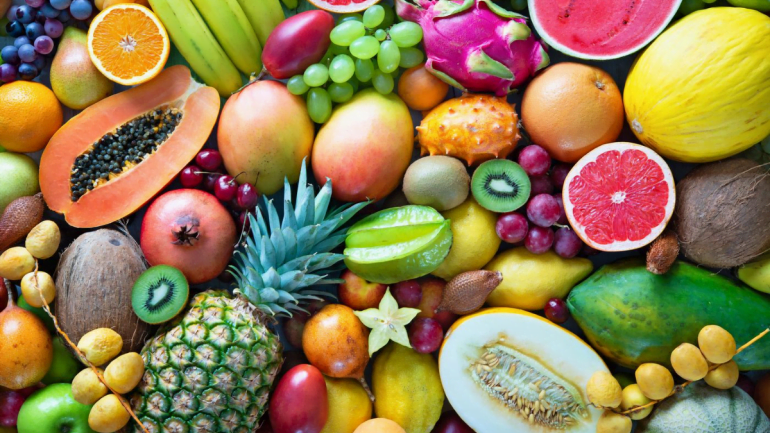According to EastFruit, global trade of exotic fruits is growing extremely fast. We decided to create a top-10 strangest exotic fruits, some of which could even be dangerous if consumed unproperly, but which are becoming popular worldwide. However, let us first determine what is an “exotic fruit”?
Usually people call fruit “exotic” if it is not commonly grown or found in a region where they live. However, what is considered exotic can vary depending on the region and culture. For instance, a fruit that is considered exotic in one country may be a common staple in another. With the climate change and global trade development, these perceptions also change. E.g. bananas are still considered exotic fruits in the countries of the Central Asia but they are one of the most commonly consumed fruits already.
What drives the demand for exotic fruits?
We think it is curiosity, potential health benefits, interest in obtaining new emotions and, in some cases, availability and affordability. Sometimes fruits which are not grown in your region could be more affordable than these produced locally – a good example is banana.
However, in this article we are talking about the fruits, which are not yet nearly as popular as bananas, which may look and even taste strange to many consumers in the Northern Hemisphere and which are gaining popularity. Here is the list:
Durian is our distant favourite and we wrote many articles about it. In Asian countries, where durian grows, this fruit is described briefly: “Hell outside, Heaven inside” and Chinese just love it 0- they spend billions of dollars each year on durian imports. This fruit is native to Southeast Asia and is known for its spiky exterior. It has a creamy yellow interior with large seeds and is often used in Southeast Asian cuisine.

Rambutan: This fruit is considered strange due to its spiky red exterior with a sweet, juicy white interior. The name “rambutan” comes from the Malay-Indonesian languages word for “rambut” or “hair”, a reference to the many hairy protuberances of the fruit’s skin. The flesh on the inside of the rambutan is white in color and is eaten. It is very fragrant and tasty, with many people comparing its taste to sweet and sour grapes. Rambutan fruits contain vitamins C, B1, and B2, calcium, phosphorus, magnesium and iron.
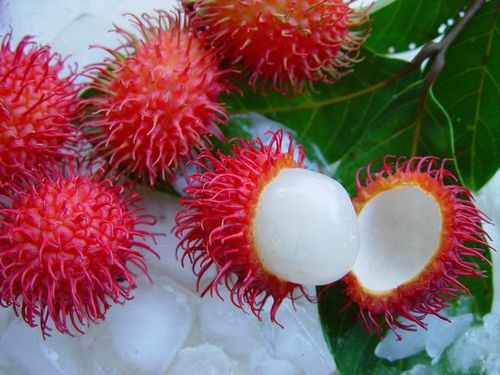
Fruit of the Hala Aka Puhala Tree, also known as the screw pine fruit: This fruit is considered strange due to its spiky exterior and sweet, juicy interior. It’s also used in traditional Hawaiian medicine. The Hala fruit is made up of dozens of segments called keys or cones, which are attached together by a core. The innards of each key are pulpy, while the green outer edge is so fibrous it can be used as dental floss. Islanders chew on the raw fruit, boil it with grated coconut, or grind it into a paste. One taster likened the flavor of fresh Hala juice to “a mixture of sugarcane and mango,” with the consistency of thick nectar. Only female trees bear fruit, but males produce their own useful substance: Early Hawaiian cultures powdered the trees’ fragrant, yellow pollen on their bodies and beds as an aphrodisiac!
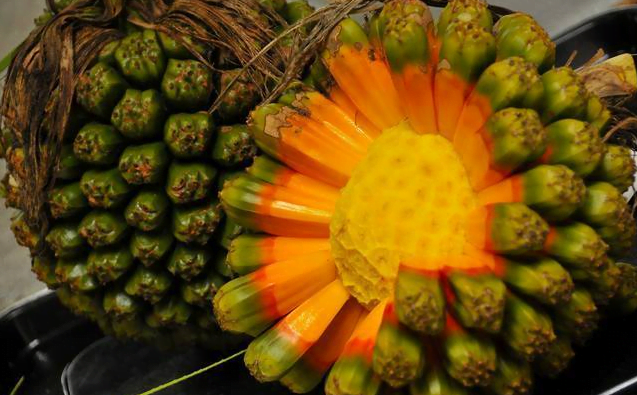
Horned Melon also known as kiwano: is a close relative of cucumbers and melons! This fruit is also considered strange due to its spiky orange exterior and a green jelly-like interior with seeds. The horned melon has a sweet to sour taste, with a subtle hint of banana and lemon and is packed full of essential nutrients such as vitamins and minerals that play a role in its ability to positively impact health.
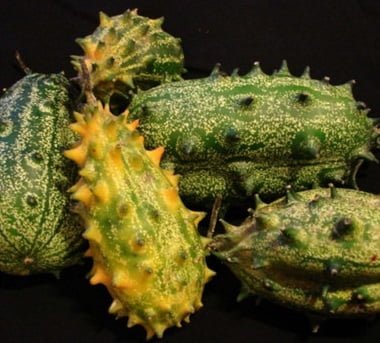
Mangosteen is often called the “queen of fruits because of its sweet, juicy, and fragrant taste. This fruit is considered strange due to its hard purple exterior with a sweet, tangy white interior. The fruit is round, with a hard outer shell that must be removed to reveal the edible fruit inside. Mangosteen is rich in antioxidants, which can help protect against cancer and other diseases. The fruit is also a good source of vitamin C, fiber, and potassium and has been used for centuries in traditional medicine to treat a variety of ailments, including diarrhea, skin infections, and wounds.

Ackee: It is the national fruit of Jamaica and is a popular ingredient in Jamaican cuisine. This fruit is considered strange due to its bright red exterior and a creamy white interior with black seeds. The fruit is pear-shaped and contains a toxic compound called hypoglycin A, which can cause vomiting, seizures, and even death if consumed before it has fully ripened. When ripe, the fruit splits open to reveal three large black seeds surrounded by a soft, creamy yellow flesh that is often used in savory dishes like ackee and saltfish.
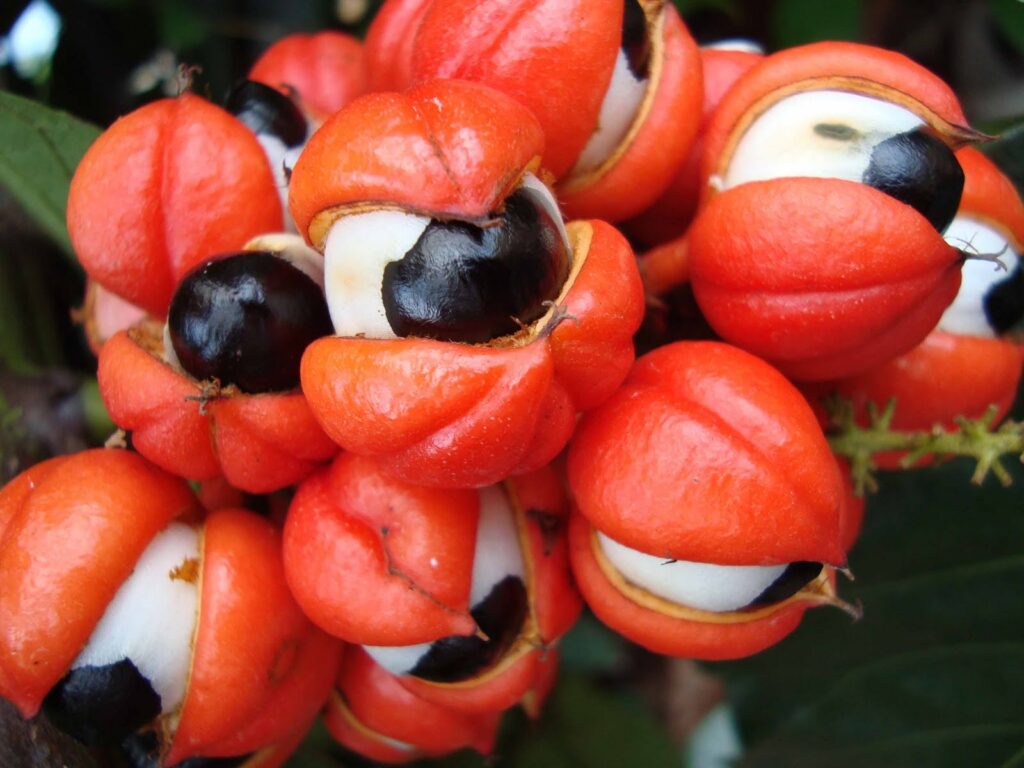
Akebi: Akebi is a mysterious and beautiful fruit native to the north of Japan and has only been cultivated and available in stores only in recent decades. The translucent white flesh inside, filled with countless white capped shiny black seeds is eaten as fruit. Unbeknownst to many, the purple pod can be cooked and eaten as well, but like a vegetable, not a fruit! The fruit part tastes like a combination of banana, passionfruit, and lychee.
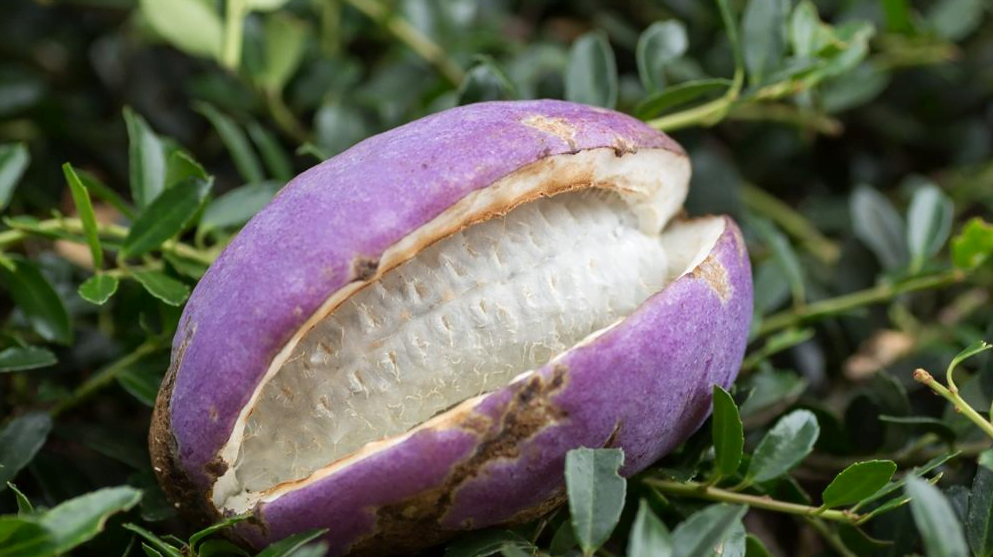
Pitaya: also known as dragonfruit, is considered strange due to its bright pink exterior with a white or pink interior filled with black seeds. It’s often used in smoothies and salads. Sometimes pitaya is called a “strawberry pear”. The names “pitahaya” and “pitaya” come from Mexico, and “pitaya roja” in Central America and northern South America, possibly relating to pitahaya for names of tall cacti species with flowering fruit. Dragon fruit grows on a climbing cactus plant that can grow from 15-20 feet high and can live for as long as two decades.
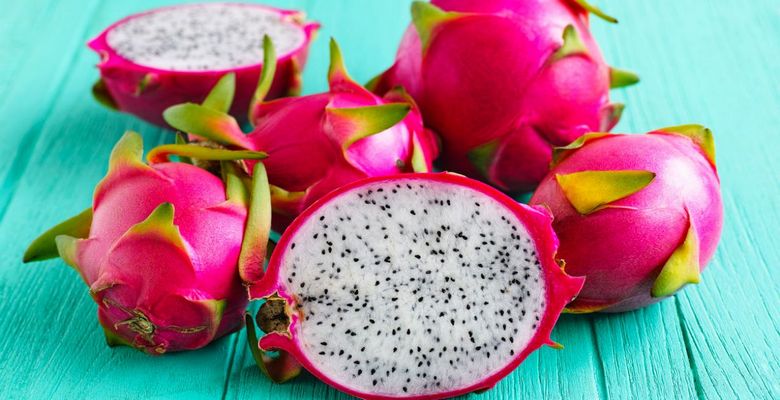
Jackfruit: also has spikes outside with a yellow or orange interior that tastes like a combination of banana, pineapple, and mango. It’s often used as a meat substitute in vegan dishes due to its meaty texture. It is also known as jack tree, fenne, jakfruit, jack or jak. It is a relative to the fig, mulberry and breadfruit. The jackfruit is the national fruit of Bangladesh. Jackfruit is the largest fruit borne by any tree, growing up to 35 inches and 60 pounds! It is a “multiple fruit,” which means it is made of multiple flowers that have united to form a single fruit.
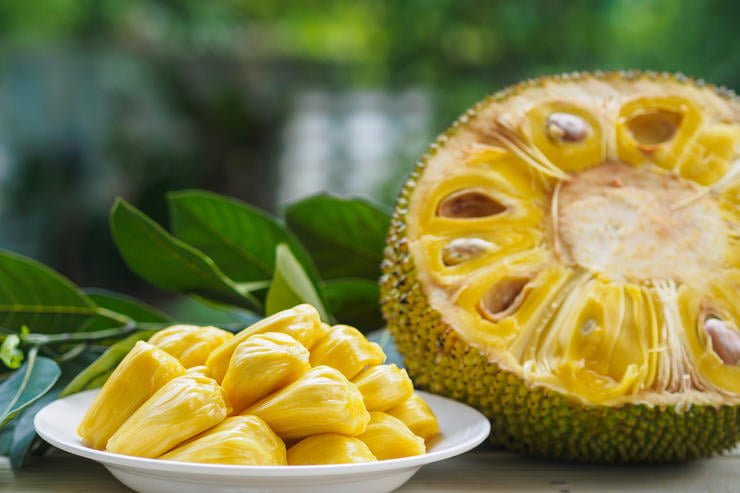
Salak: Also known as snakefruit, this fruit is considered strange due to its hard brown exterior with a sweet, tangy white interior that tastes like pineapple mixed with lemon juice. Salak is a fruit that grows on a palm tree and is known for its scaly skin that resembles snake skin. The fruit is pear-shaped and grows in clusters at the base of the palm tree and a texture of the fruit is similar to that of an apple. Salak is very rich in antioxidants and contains vitamins C and A, potassium, iron, and fiber. Thanks to these characteristics salak is often used in traditional medicine to treat a variety of ailments such as diarrhea, fever, and high blood pressure.

Which of these fruits have you tried and liked most? Tell us in the comments!
The use of the site materials is free if there is a direct and open for search engines hyperlink to a specific publication of the East-Fruit.com website.




